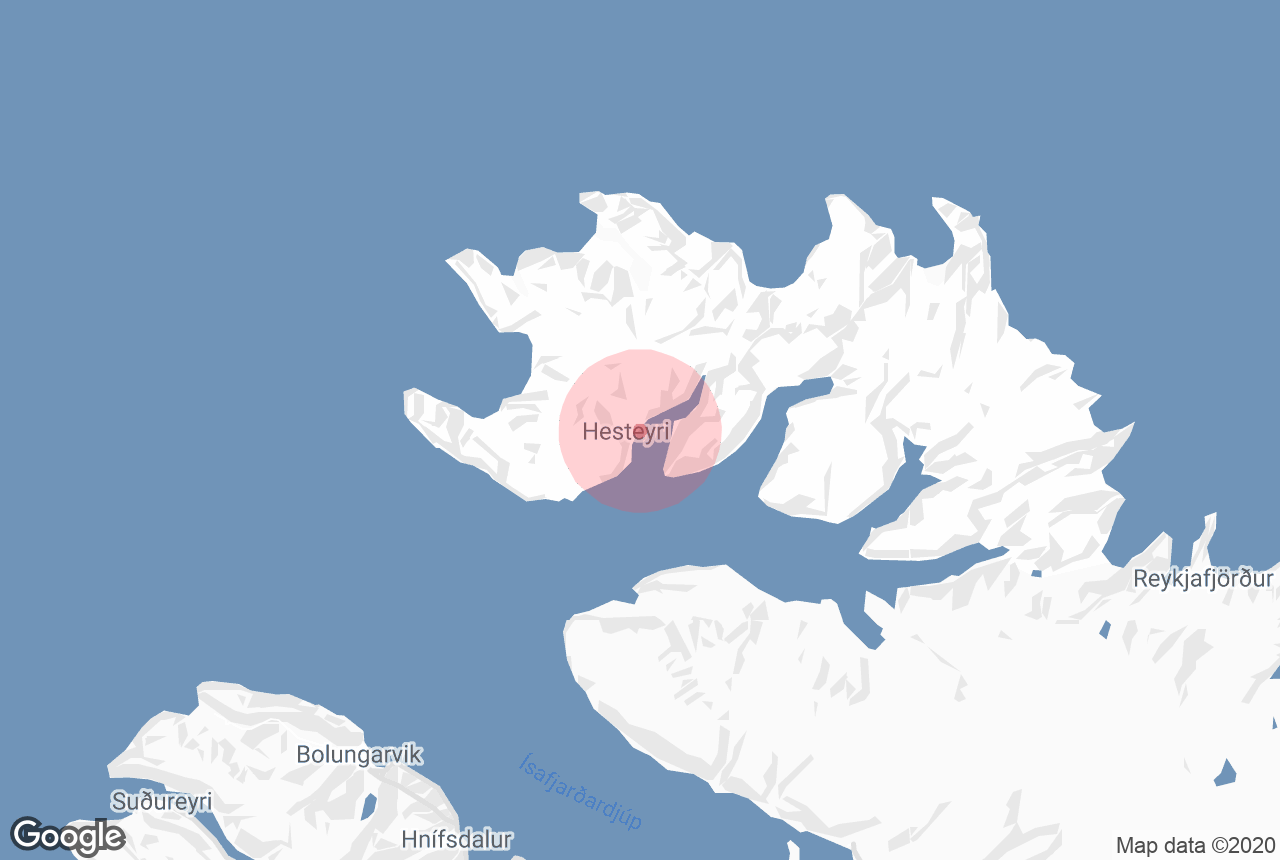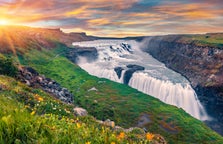Hornstrandir Travel Guide
Hornstrandir is a nature reserve located in the Westfjords, in the north-west of Iceland. The total area covers 580 square kilometres (220 square miles) of tundra, cliffs, flowering fields and ice.
Discover the wonders of this region by taking a tour of the Westfjords. This beautiful region can be visited as part of this 14-Day Self Drive. Those who rent a car and travel to the Westfjords can visit it on this day tour.
The glacier Drangajökull sits to the region’s southern area.
The nature reserve was established in 1975. Its borders encompass the picturesque fjords Hrafnfjörður and Furufjörður, finishing at Skorarheiði moor.
Photo from Wikimedia, Creative Commons, by Mickaël Delcey. No edits made.
History
Given the nature reserve’s isolated location, even for the Westfjords, it makes sense that Hornstrandir has a rich history quite distinct from that of mainland Iceland. Farming was difficult given the region’s terrain and tall cliffs, so early settlers chose fishing and the hunting of birds as their primary livelihood.
Those who lived there often stayed in abodes some distance from one another, making travelling to and from farmsteads difficult in the wintertime. In this respect, life at Hornstrandir was lonely and difficult to sustain.
Outlaws often travelled to Hornstrandir in the hope of boarding foreign ships and embarking to start a new life abroad. Aside from fearing the law, such travellers also had to watch out for polar bears who, every so often, would float ashore on an ice cap or swim over from neighbouring Greenland. This was especially the case during the Mini Ice Age at the start of the last millennium.
Flora and Fauna

There are approximately 260 different species of flowering plant and fern that grow in Hornstrandir; many of these are native across the entirety of the Westfjords, others are unique only to the reserve.
One of the reasons for this luscious abundance of plant life is because Hornstrandir has been devoid of grazing animals for several decades. Knee-high plant life will often stretch out for kilometres, culminating in a challenging hike through the wilderness.
Ever since the 1950s, Hornstrandir has been devoid of permanent human residents. The area is inaccessible to motorised traffic, and only a few old buildings and farmsteads now allude to the area’s history of settlement. It is, however, home to Iceland’s only native mammal, the cheeky, yet elusive, Arctic Fox, who preys upon the birds nesting along Hornstrandir’s towering cliff-faces.
There is a hunting ban across Hornstrandir, meaning the fox populations are free to live without the threat of human intrusion. This means they have no fear of travellers, and will often approach a camp looking for a bite to eat.
The other most prominent mammal in the region are field mice, though these are, naturally, more difficult to spot. As for birdlife, enthusiasts can spot many nesting species, notably arctic terns, puffins and black guillemots. The region has the two of the largest bird cliffs in Europe, overshadowing the coastal paradise that is Hornvík Bay.
The only one larger is Látrabjarg, on the other side of the Westfjords.
Activities at Hornstrandir
Those looking to hike, explore and stay at Hornstrandir must bring a tent and supplies if they’re looking to camp overnight. As previously stated, the nature reserve has no roads, permanent dwellings or shops, meaning that those who take to the wild here must be self-sustaining.
Travelling here requires much forethought and visitors must be fully prepared with food, water, warm layers of clothing and sturdy hiking boots.
Hiking to Hornbjarg is a must-do activity in Hornstrandir; this is the area's most iconic natural feature, a towering cliff at the top of the nature reserve
The region is only accessible for organised trips during the summer months (May, June, July and, occasionally, August). During the winter, only specially permitted excursions are allowed to enter the area.
Attractions Nearby
Popular categories

Download Iceland’s biggest travel marketplace to your phone to manage your entire trip in one place
Scan this QR code with your phone camera and press the link that appears to add Iceland’s biggest travel marketplace into your pocket. Enter your phone number or email address to receive an SMS or email with the download link.



















